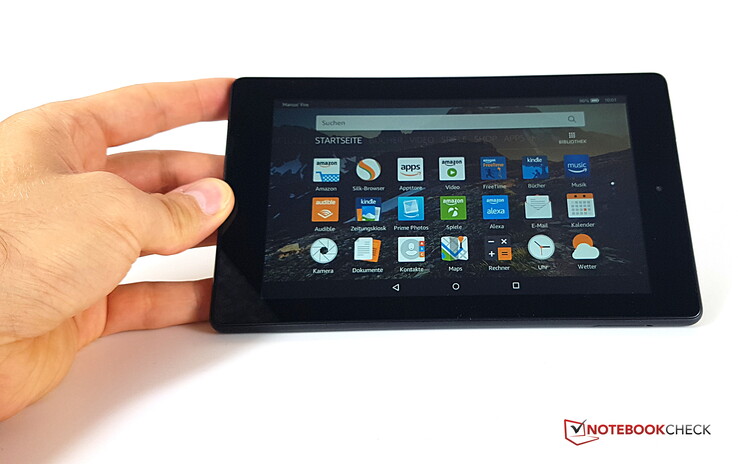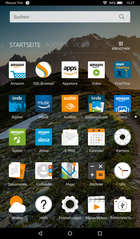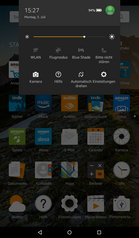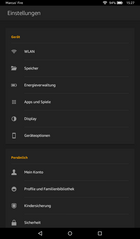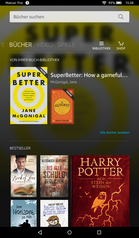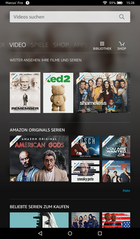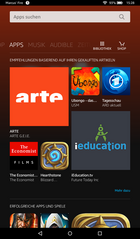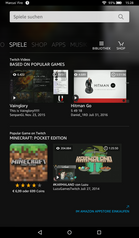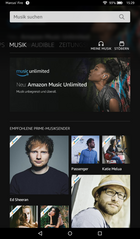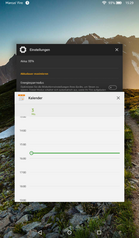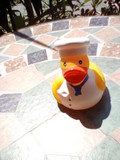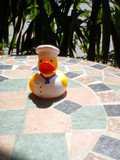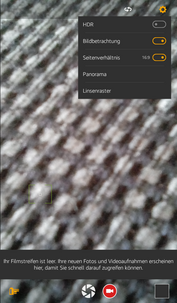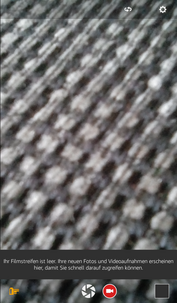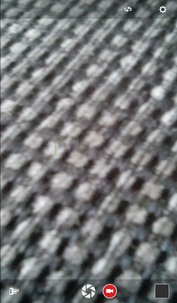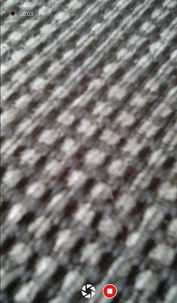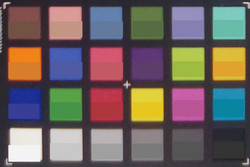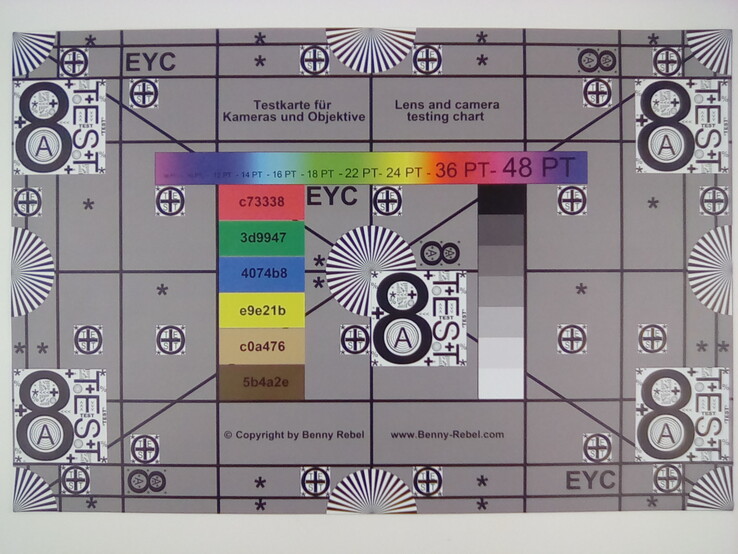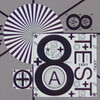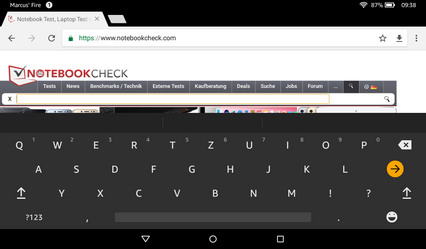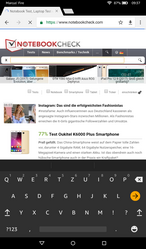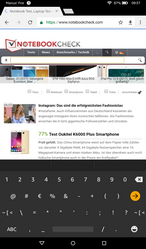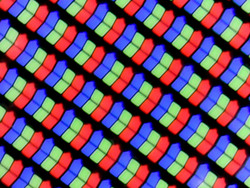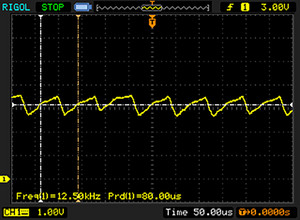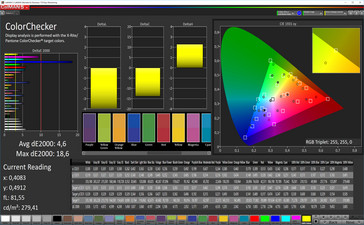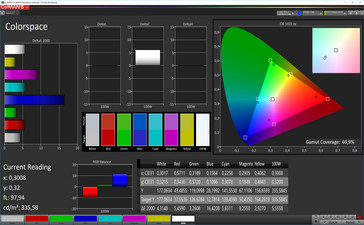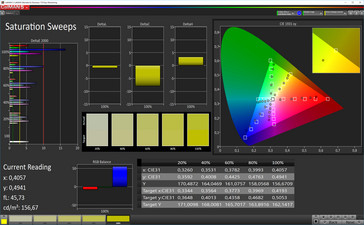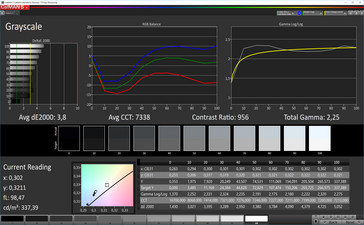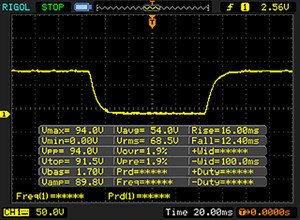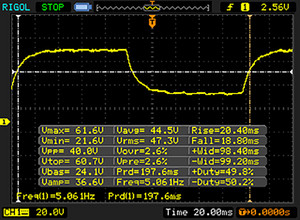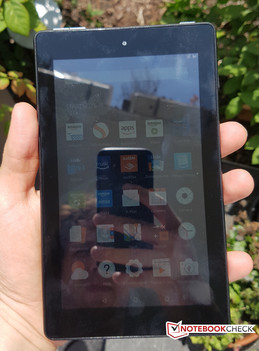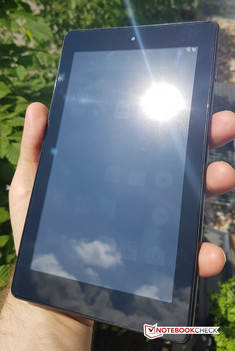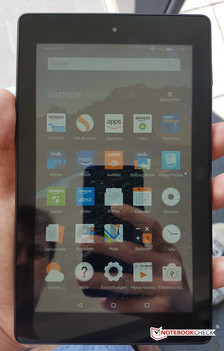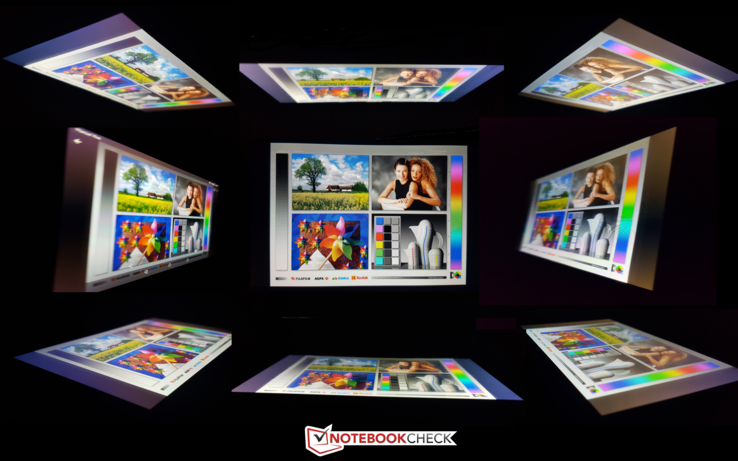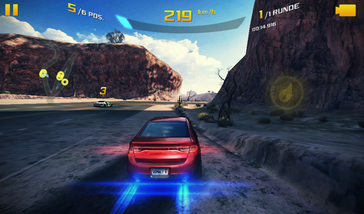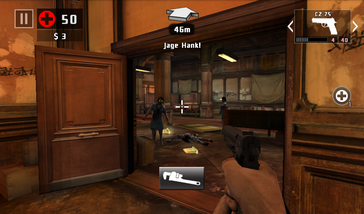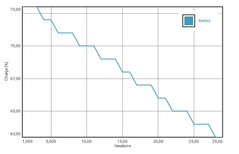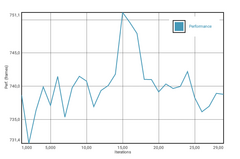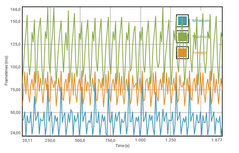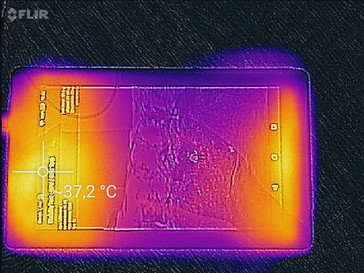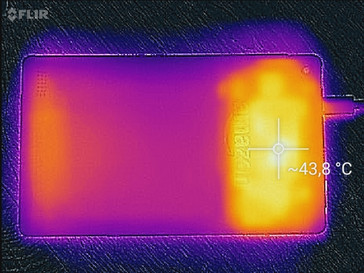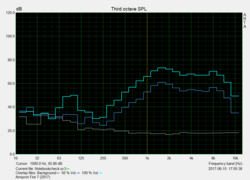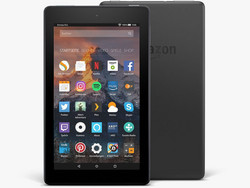Amazon Fire 7 (2017) Tablet Review
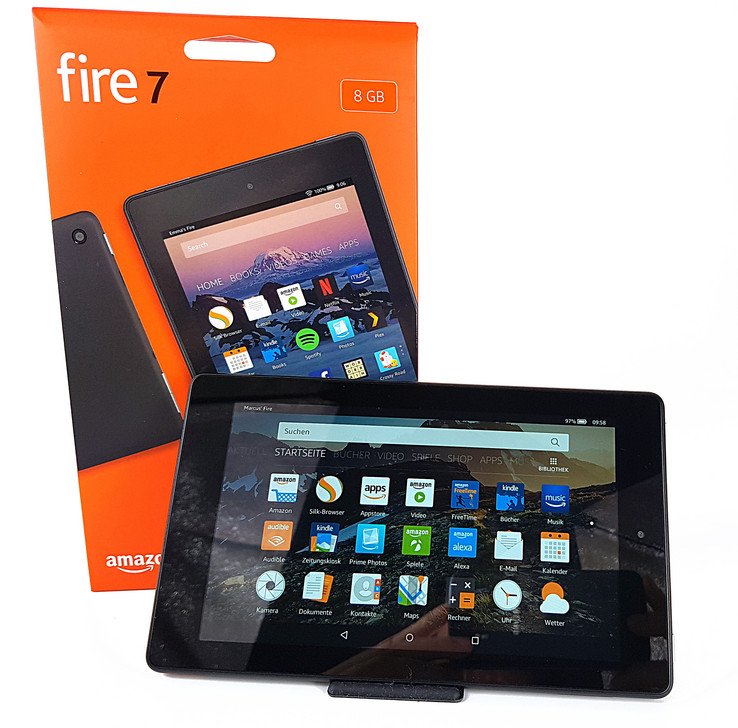
For the original German review, see here.
Amazon has updated its entry-level Fire 7 (2017) tablet but has left the price untouched. Starting at a low $49 with 8 GB of storage, add $15 for the ad-free version and double the amount of storage for only $20 extra. Thus, the ad-free 16 GB top-model can be had for $85.
At first glance, the tablet seems to have remained unmodified from last year’s model. It is still equipped with a 7-inch 1024x600 resolution display, has a 2,980 mAh battery, the same MediaTek quad-core SoC and it looks exactly the same as well. Even the cameras are identical – 2 MP rear-facing and 0.3 MP front-facing camera.
Finding worthy competitors for the $49 Fire 7 (2017) was a challenge, since most entry-level tablets are significantly more expensive. We have decided to go with the Acer Iconia One 8, the Samsung Galaxy Tab A7 2016, the Xiaomi MiPad 2, and its own predecessor, the Fire 7 (Late 2015).
Case
The plastic case is available in one color only: black. Compared to its predecessor, the new version is slightly smaller (187 x 109 x 8.7 mm compared to 191 x 115 x 10.6 mm/~7.4 x 4.3 x 0.34 inches vs. ~7.5 x 4.5 x 0.42 inches) and lighter (295 g vs. 313 g/~10.4 vs. 11.0 oz). The bezels around the display are still fairly wide, resulting in a screen to body ratio of only 68%.
The Fire 7 (2017)’s thinner design leads to a minor ripple effect on the display if pressure is applied to its rear side. This should not matter in everyday use though, and overall rigidity is okay. The controls (volume rocker, power button) are firm and well made, and offer well-defined and pleasant feedback.
Connectivity
The 8 GB internal storage our review model was equipped with were on the scanty side and completely used up after installing two games and a few applications. This did not surprise us, given that only 4.5 GB were available after first startup. The 16 GB model offers around 11.6 GB available storage out of the box.
Storage can be upgraded via MicroSD card of up to 256 GB, and the tablet fully supports storing apps and application data on SD storage via APP2SD. In addition, all Fire 7 (2017) users receive free and unlimited Cloud storage for all Amazon content and photos.
The tablet is charged via the USB 2.0 MicroUSB port at the bottom of the device, and it supports external peripherals, such as thumb drives or keyboards, via USB-OTG.
Music can be listened to either through the integrated mono speaker or external speakers connected via the tablet’s 3.5 mm audio jack.
Software
The device’s operating system, Fire OS 5 Bellini (version 5.4.0 in our case), is based on Android 5.1 Lollipop and heavily modified. Some Google services, for example the Google Play Store, are not supported on this tablet out of the box, but it is possible to install these services yourself.
In addition to the changes made to the user interface, the entire OS is also geared towards Amazon media consumption, and Amazon services like the Kindle shop or Instant Video can be found by swiping right on the home screen. Amazon promises accurate and dynamic recommendations via ASAP (Advanced Streaming and Prediction) by analyzing one’s media consumption patterns. Content can be downloaded for offline consumption via OnDeck automatically, and “WhisperSync” remembers how much of a movie or TV series has already been watched and where to resume.
Font size and color can be customized individually. Additionally, a preconfigured mode called “Blue Shade” reduces blue light and makes reading in the dark easier and less strenuous for your eyes.
Communication
Compared to the previous generation's single-band Wi-Fi chip, the new Fire 7 (2017) now supports dual-band Wi-Fi in both, the 2.4 GHz and the lesser used 5 GHz band supporting 802.11a/b/g/n. We were unable to connect to a 5 GHz network during our tests though since it simply did not pop up in the list of available networks to connect to. Connected to our Linksys EA8500 reference router, the tablet managed a transfer speed of around 50 MBit/s (iperf3 Client) and thus not really any faster than its own predecessor. Standing right next to the Telekom Speedport W921V router damping was at -32 dBm and thus fairly low.
Bluetooth 4.1 is supported; WWAN (LTE) or GPS location services are not.
| Networking | |
| iperf3 transmit AX12 | |
| Samsung Galaxy Tab S3 SM-T825 | |
| Amazon Fire 7 2017 | |
| Amazon Fire Tablet | |
| iperf3 receive AX12 | |
| Samsung Galaxy Tab S3 SM-T825 | |
| Amazon Fire 7 2017 | |
| Amazon Fire Tablet | |
Cameras
The rear-facing camera performs as expected of a cheap entry-level tablet. Its 2 MP CMOS sensor (1600x1200) is the same as on the previous model, and thus still disappointing. Photos lack dynamic range and are overly dark in bright conditions, thereby obliterating all traces of details. In addition, photos are often out of focus and almost always either over- or underexposed. Low-light performance is outright unacceptable: photos suffer from massive noise and are very blurry. Videos are recorded in 720p but video quality was terrible.
Not much can be said about the front-facing 0.3 MP camera; it is barely enough for video chats, and records videos at 640x480 with up to 30 fps.
Under normalized conditions, colors turned out pretty accurate when compared to their respective reference color. The X-Rite ColorChecker Passport analysis of the tablet’s rear-facing 2 MP camera indicates a very warm white balance and grayish blacks. Crispness and focus of our test chart was acceptable in the center but noticeably blurrier around the edges.
Accessories and Warranty
Included in the box are a USB 2.0 cable, a modular 5 W charger (5 V, 1 A), and a quick start guide. Headphones are not included.
The tablet is sold with a 12-month limited warranty. Please see our Guarantees, Return policies and Warranties FAQ for country-specific information.
Input Devices and Handling
The Fire 7 (2017) comes with the standard Android onscreen controls for Back, Home and Multitasking. The capacitive screen is precise but certainly not the fastest. Accordingly, overall usage is pretty slow.
The virtual onscreen keyboard differs in some aspects from Google’s standard keyboard. The tablet’s glass surface offers decent slippage, and typing is comparatively comfortable.
Display
With a resolution of 1024x600, the 7-inch IPS display with built-in polarizer sports a pixel density of only 170 ppi. For everyday use, we found this to be acceptable. The resolution is fairly low though and looking at smaller text for longer periods of time can become quite tiring indeed.
At a maximum brightness of 369 nits, the display is not only considerably brighter than on the Fire 7 (2017)’s predecessor but also much more evenly distributed (88%). Certainly nothing to write home about when compared with high-end tablets. In the APL50 test with evenly distributed dark and bright areas, the display only managed 336 nits (identical to last year’s model). The display’s black level is at 0.36 nits with a resulting contrast ratio of 933:1. The Fire 7 (2017) lacks an ambient light sensor for automatic brightness control.
| |||||||||||||||||||||||||
Brightness Distribution: 88 %
Center on Battery: 328 cd/m²
Contrast: 937:1 (Black: 0.35 cd/m²)
ΔE ColorChecker Calman: 4.6 | ∀{0.5-29.43 Ø4.78}
ΔE Greyscale Calman: 3.8 | ∀{0.09-98 Ø5}
Gamma: 2.25
CCT: 7338 K
| Amazon Fire 7 2017 IPS, 1024x600, 7" | Amazon Fire Tablet IPS, 1024x600, 7" | Acer Iconia One 8 IPS, 1280x800, 8" | Samsung Galaxy Tab A7 2016 IPS, 1280x800, 7" | Xiaomi MiPad 2 IPS, 2048x1536, 7.9" | Samsung Galaxy Tab S3 SM-T825 Super AMOLED, 2048x1526, 9.7" | |
|---|---|---|---|---|---|---|
| Screen | -30% | 6% | -4% | 9% | 46% | |
| Brightness middle (cd/m²) | 328 | 323 -2% | 367 12% | 358 9% | 425 30% | 452 38% |
| Brightness (cd/m²) | 337 | 299 -11% | 338 0% | 344 2% | 402 19% | 468 39% |
| Brightness Distribution (%) | 88 | 83 -6% | 83 -6% | 92 5% | 91 3% | 82 -7% |
| Black Level * (cd/m²) | 0.35 | 0.38 -9% | 0.31 11% | 0.37 -6% | 0.4 -14% | |
| Contrast (:1) | 937 | 850 -9% | 1184 26% | 968 3% | 1063 13% | |
| Colorchecker dE 2000 * | 4.6 | 9.3 -102% | 4.1 11% | 5.3 -15% | 4.98 -8% | 1.8 61% |
| Colorchecker dE 2000 max. * | 18.6 | 17.6 5% | 20.2 -9% | 6.61 64% | 4 78% | |
| Greyscale dE 2000 * | 3.8 | 7.8 -105% | 4.38 -15% | 4.7 -24% | 5.2 -37% | 1.2 68% |
| Gamma | 2.25 98% | 1.99 111% | 2.33 94% | 2.44 90% | 2.65 83% | 2.11 104% |
| CCT | 7338 89% | 7736 84% | 6394 102% | 7222 90% | 7249 90% | 6500 100% |
| Color Space (Percent of AdobeRGB 1998) (%) | 82.32 | |||||
| Color Space (Percent of sRGB) (%) | 99.06 |
* ... smaller is better
Screen Flickering / PWM (Pulse-Width Modulation)
| Screen flickering / PWM detected | 12500 Hz | ≤ 17 % brightness setting | |
The display backlight flickers at 12500 Hz (worst case, e.g., utilizing PWM) Flickering detected at a brightness setting of 17 % and below. There should be no flickering or PWM above this brightness setting. The frequency of 12500 Hz is quite high, so most users sensitive to PWM should not notice any flickering. In comparison: 53 % of all tested devices do not use PWM to dim the display. If PWM was detected, an average of 8111 (minimum: 5 - maximum: 343500) Hz was measured. | |||
Compared with the Fire 7 (Late 2015), contrast ratio and black level have been improved slightly. For an IPS panel, however, they are still only average. Color and grayscale accuracy, on the other hand, has been improved dramatically. Its DeltaE deviations of 4.6 (colors) and 3.8 (grayscale) – while still far from ideal – are noteworthy improvements. Our own measurements with a colorimeter and the CalMAN software yielded a rather warm color temperature of 7,338 K, and sRGB coverage was not the best. In addition, we found evidence of PWM flickering.
Display Response Times
| ↔ Response Time Black to White | ||
|---|---|---|
| 28.4 ms ... rise ↗ and fall ↘ combined | ↗ 16 ms rise | |
| ↘ 12.4 ms fall | ||
| The screen shows relatively slow response rates in our tests and may be too slow for gamers. In comparison, all tested devices range from 0.1 (minimum) to 240 (maximum) ms. » 74 % of all devices are better. This means that the measured response time is worse than the average of all tested devices (20.2 ms). | ||
| ↔ Response Time 50% Grey to 80% Grey | ||
| 39.2 ms ... rise ↗ and fall ↘ combined | ↗ 20.4 ms rise | |
| ↘ 18.8 ms fall | ||
| The screen shows slow response rates in our tests and will be unsatisfactory for gamers. In comparison, all tested devices range from 0.165 (minimum) to 636 (maximum) ms. » 59 % of all devices are better. This means that the measured response time is worse than the average of all tested devices (31.6 ms). | ||
Performance
The Fire 7 (2017) is powered by a quad-core MediaTek MT8127 SoC consisting of four 28 nm Cortex A7 cores running at 1.3 GHz, 1 GB of RAM, and an OpenGL ES 2.0 compatible Mali-450 (MP4) GPU with 4 clusters.
The MT8127’s performance was as low as expected, and the overall experience in line with other entry-level tablets: lag and stuttering were fairly normal. Launching and closing applications takes a while as well due to the tablet’s slow eMMC storage.
In synthetic benchmarks, the Fire 7 (2017) usually performed poorly when compared to its competitors. Given that the SoC has remained unchanged from the previous model, it was no surprise that both models performed largely identical.
| AnTuTu v6 - Total Score | |
| Samsung Galaxy Tab S3 SM-T825 | |
| Xiaomi MiPad 2 | |
| Amazon Fire 7 2017 | |
| Amazon Fire Tablet | |
| Samsung Galaxy Tab A7 2016 | |
| PCMark for Android | |
| Work performance score | |
| Samsung Galaxy Tab S3 SM-T825 | |
| Xiaomi MiPad 2 | |
| Acer Iconia One 8 | |
| Amazon Fire 7 2017 | |
| Amazon Fire Tablet | |
| Samsung Galaxy Tab A7 2016 | |
| Work 2.0 performance score | |
| Samsung Galaxy Tab S3 SM-T825 | |
| Amazon Fire 7 2017 | |
| Geekbench 4.4 | |
| 64 Bit Single-Core Score | |
| Samsung Galaxy Tab S3 SM-T825 | |
| Amazon Fire 7 2017 | |
| 64 Bit Multi-Core Score | |
| Samsung Galaxy Tab S3 SM-T825 | |
| Amazon Fire 7 2017 | |
| Compute RenderScript Score | |
| Samsung Galaxy Tab S3 SM-T825 | |
| GFXBench (DX / GLBenchmark) 2.7 | |
| T-Rex Onscreen | |
| Samsung Galaxy Tab S3 SM-T825 | |
| Acer Iconia One 8 | |
| Amazon Fire Tablet | |
| Xiaomi MiPad 2 | |
| Amazon Fire 7 2017 | |
| Samsung Galaxy Tab A7 2016 | |
| 1920x1080 T-Rex Offscreen | |
| Samsung Galaxy Tab S3 SM-T825 | |
| Xiaomi MiPad 2 | |
| Amazon Fire Tablet | |
| Amazon Fire 7 2017 | |
| Acer Iconia One 8 | |
| Samsung Galaxy Tab A7 2016 | |
The browser test yielded similar results. Together with its predecessor, the Fire 7 (2017) can be found in last place. Subjectively, browsing the web was very slow and loading times excessively long.
| Octane V2 - Total Score | |
| Samsung Galaxy Tab S3 SM-T825 | |
| Xiaomi MiPad 2 | |
| Acer Iconia One 8 | |
| Amazon Fire Tablet | |
| Samsung Galaxy Tab A7 2016 | |
| Amazon Fire 7 2017 | |
| WebXPRT 2015 - Overall | |
| Samsung Galaxy Tab S3 SM-T825 | |
| Acer Iconia One 8 | |
| Samsung Galaxy Tab A7 2016 | |
| Amazon Fire 7 2017 | |
| JetStream 1.1 - Total Score | |
| Xiaomi MiPad 2 | |
| Samsung Galaxy Tab S3 SM-T825 | |
| Samsung Galaxy Tab A7 2016 | |
| Amazon Fire Tablet | |
| Amazon Fire 7 2017 | |
| Mozilla Kraken 1.1 - Total | |
| Amazon Fire 7 2017 | |
| Samsung Galaxy Tab A7 2016 | |
| Amazon Fire Tablet | |
| Acer Iconia One 8 | |
| Xiaomi MiPad 2 | |
| Samsung Galaxy Tab S3 SM-T825 | |
* ... smaller is better
Even worse were the results of our storage benchmarks. According to AndroBench, the Fire 7 (2017)’s internal storage is up to 22% slower than its predecessor’s, and when reading from or writing to our MicroSD reference card (Toshiba Exceria Pro M401, max. 95 MB/s and 80 MB/s reading and writing, respectively) we found the tablet’s performance to be underwhelming at best. However, compared to its competitors the results do not look that bleak anymore.
| Amazon Fire 7 2017 | Amazon Fire Tablet | Acer Iconia One 8 | Samsung Galaxy Tab A7 2016 | Xiaomi MiPad 2 | Samsung Galaxy Tab S3 SM-T825 | |
|---|---|---|---|---|---|---|
| AndroBench 3-5 | 22% | -12% | -14% | 60% | 120% | |
| Sequential Read 256KB (MB/s) | 113.7 | 147 29% | 126 11% | 65.9 -42% | 147.9 30% | 288.6 154% |
| Sequential Write 256KB (MB/s) | 34.1 | 37 9% | 40 17% | 28.95 -15% | 56.4 65% | 87.6 157% |
| Random Read 4KB (MB/s) | 21.97 | 22 0% | 17 -23% | 21.95 0% | 24.42 11% | 45.82 109% |
| Random Write 4KB (MB/s) | 6.03 | 11 82% | 2.9 -52% | 9.55 58% | 13.96 132% | 13.13 118% |
| Sequential Read 256KB SDCard (MB/s) | 45.54 | 49.4 8% | 21.41 -53% | 76.4 68% | ||
| Sequential Write 256KB SDCard (MB/s) | 27.74 | 29.19 5% | 18.4 -34% | 58.6 111% |
Gaming
Current Games from Google’s Play Store are a challenge for the Fire 7 (2017). The integrated Mali 450 (MP4) is incapable of running games smoothly at the tablet’s native resolution. Unfortunately, we were unable to run our usual GameBench app on the Fire 7 (2017).
Overall, the Mali 450 (MP4) performed similar to the Qualcomm Adreno 320. According to our benchmarks, the latter runs demanding games, such as Asphalt 8: Airborne or Dead Trigger 2 at no more than 25 fps.
The capacitive screen and the tablet's sensors worked very well while playing games.
Emissions
Temperature
The tablet’s surface temperatures turned out to be a mixed bag. When idle, the device remained comparatively cool. Under extreme load we found a 43 °C (109.4 °F) hotspot at the rear. In everyday use, the higher-than-average temperatures around the rear-facing camera’s lens under medium load (for example when browsing the web) were very noticeable and somewhat bothersome.
In GFXBench’s battery test, the MT8127's performance remained relatively consistent and only fluctuated by around 20 FPS, or 3%.
(+) The maximum temperature on the upper side is 39.3 °C / 103 F, compared to the average of 33.7 °C / 93 F, ranging from 20.7 to 53.2 °C for the class Tablet.
(±) The bottom heats up to a maximum of 43.3 °C / 110 F, compared to the average of 33.2 °C / 92 F
(+) In idle usage, the average temperature for the upper side is 30.6 °C / 87 F, compared to the device average of 30 °C / 86 F.
Speaker
At a maximum of 80 dB(A), the single rear-facing speaker can get sufficiently loud, but its overall performance is very poor. Distortions are very noticeable at maximum volume, and the speaker’s soundscape is unbalanced. Low frequencies less than 250 Hz are inaudible altogether, and the speaker’s emphasis is clearly on mids and highs between 1 and 9 kHz.
The integrated 3.5 mm audio jack offered decent performance considering the tablet’s price.
Amazon Fire 7 2017 audio analysis
(±) | speaker loudness is average but good (80 dB)
Bass 100 - 315 Hz
(-) | nearly no bass - on average 24.7% lower than median
(±) | linearity of bass is average (12.1% delta to prev. frequency)
Mids 400 - 2000 Hz
(±) | higher mids - on average 8.1% higher than median
(±) | linearity of mids is average (9.3% delta to prev. frequency)
Highs 2 - 16 kHz
(±) | higher highs - on average 5.7% higher than median
(+) | highs are linear (4.5% delta to prev. frequency)
Overall 100 - 16.000 Hz
(±) | linearity of overall sound is average (27.3% difference to median)
Compared to same class
» 84% of all tested devices in this class were better, 4% similar, 12% worse
» The best had a delta of 7%, average was 20%, worst was 129%
Compared to all devices tested
» 83% of all tested devices were better, 4% similar, 13% worse
» The best had a delta of 4%, average was 24%, worst was 134%
Samsung Galaxy Tab A7 2016 audio analysis
(+) | speakers can play relatively loud (87.8 dB)
Bass 100 - 315 Hz
(-) | nearly no bass - on average 35.9% lower than median
(±) | linearity of bass is average (10.6% delta to prev. frequency)
Mids 400 - 2000 Hz
(+) | balanced mids - only 4.6% away from median
(+) | mids are linear (5.2% delta to prev. frequency)
Highs 2 - 16 kHz
(+) | balanced highs - only 3.9% away from median
(+) | highs are linear (6.4% delta to prev. frequency)
Overall 100 - 16.000 Hz
(±) | linearity of overall sound is average (23.9% difference to median)
Compared to same class
» 74% of all tested devices in this class were better, 6% similar, 20% worse
» The best had a delta of 7%, average was 20%, worst was 129%
Compared to all devices tested
» 71% of all tested devices were better, 7% similar, 23% worse
» The best had a delta of 4%, average was 24%, worst was 134%
Xiaomi MiPad 2 audio analysis
(+) | speakers can play relatively loud (95.1 dB)
Bass 100 - 315 Hz
(-) | nearly no bass - on average 26.3% lower than median
(+) | bass is linear (5.4% delta to prev. frequency)
Mids 400 - 2000 Hz
(±) | reduced mids - on average 5% lower than median
(+) | mids are linear (4.2% delta to prev. frequency)
Highs 2 - 16 kHz
(+) | balanced highs - only 3.9% away from median
(+) | highs are linear (1.8% delta to prev. frequency)
Overall 100 - 16.000 Hz
(±) | linearity of overall sound is average (17.9% difference to median)
Compared to same class
» 46% of all tested devices in this class were better, 6% similar, 48% worse
» The best had a delta of 7%, average was 20%, worst was 129%
Compared to all devices tested
» 36% of all tested devices were better, 8% similar, 56% worse
» The best had a delta of 4%, average was 24%, worst was 134%
Frequency diagram (checkboxes selectable/deselectable!)
Energy Management
Power Consumption
Overall, power consumption was satisfactory for a device performing as poorly as this. Amazon has managed to improve upon it compared to its predecessor, in particular in regards to idle power consumption.
| Off / Standby | |
| Idle | |
| Load |
|
Key:
min: | |
| Amazon Fire 7 2017 2980 mAh | Amazon Fire Tablet 2980 mAh | Acer Iconia One 8 mAh | Samsung Galaxy Tab A7 2016 4000 mAh | Xiaomi MiPad 2 6190 mAh | |
|---|---|---|---|---|---|
| Power Consumption | -13% | -16% | -35% | -124% | |
| Idle Minimum * (Watt) | 0.97 | 1.12 -15% | 0.8 18% | 1.91 -97% | 3.33 -243% |
| Idle Average * (Watt) | 2.68 | 3.06 -14% | 3.1 -16% | 3.59 -34% | 5.01 -87% |
| Idle Maximum * (Watt) | 2.69 | 3.31 -23% | 3.3 -23% | 4.06 -51% | 5.19 -93% |
| Load Average * (Watt) | 4.26 | 4.44 -4% | 5.1 -20% | 4.29 -1% | 8.32 -95% |
| Load Maximum * (Watt) | 4.64 | 5.09 -10% | 6.5 -40% | 4.31 7% | 9.33 -101% |
* ... smaller is better
Battery Life
The battery has remained unchanged compared to last year’s model, and its capacity is still 2,980 mAh. However, thanks to the new version’s optimized power consumption, battery life is slightly better than before. In our Wi-Fi test at normalized display brightness (150 nits), the tablet lasted for a very good 8:36 hours. On average, its competitors lasted longer though. The comparatively small difference between runtimes when idle and under load show how much the SoC has to do even in low-load scenarios.
Charging the tablet from zero to 100% with the included charger takes around 4 hours.
| Amazon Fire 7 2017 2980 mAh | Amazon Fire Tablet 2980 mAh | Acer Iconia One 8 mAh | Samsung Galaxy Tab A7 2016 4000 mAh | Xiaomi MiPad 2 6190 mAh | |
|---|---|---|---|---|---|
| Battery runtime | -17% | 31% | 36% | -19% | |
| Reader / Idle (h) | 15.7 | 21 34% | 22.6 44% | ||
| H.264 (h) | 8.5 | 13.3 56% | 8.6 1% | ||
| WiFi v1.3 (h) | 8.6 | 7.1 -17% | 12.4 44% | 10.3 20% | 7 -19% |
| Load (h) | 3.5 | 3.1 -11% | 6.3 80% |
Pros
Cons
Verdict
Considering its low price of only $49, the Fire 7 (2017) is a nice and well-rounded offer. We would have preferred to see a more significant upgrade but unfortunately, the slow SoC and internal storage, the low-resolution display, and only 1 GB of RAM are still with us. Thus, despite the fact that battery life and color accuracy have been improved, the tablet’s overall system performance is still quite poor.
The question on everyone’s mind is: what is the Fire 7 (2017) tablet good for? The 170 ppi low-resolution display is certainly not made for extensive reading sessions. It lacks power for running games smoothly or even simply browsing the web. Watching movies would have been much more enjoyable if not for the poor quality single rear-facing speaker. Obviously, everything on that list can be done with the Fire 7 (2017), but it does require some serious compromises.
The latest Amazon Fire 7 tablet will once again only suffice for the most modest users. Unfortunately, Amazon has failed to bring the tablet’s hardware up to date. Thus, the most convincing selling point of the Fire 7 (2017) remains its low price.
Amazon Fire 7 2017
- 07/10/2017 v6 (old)
Marcus Herbrich




